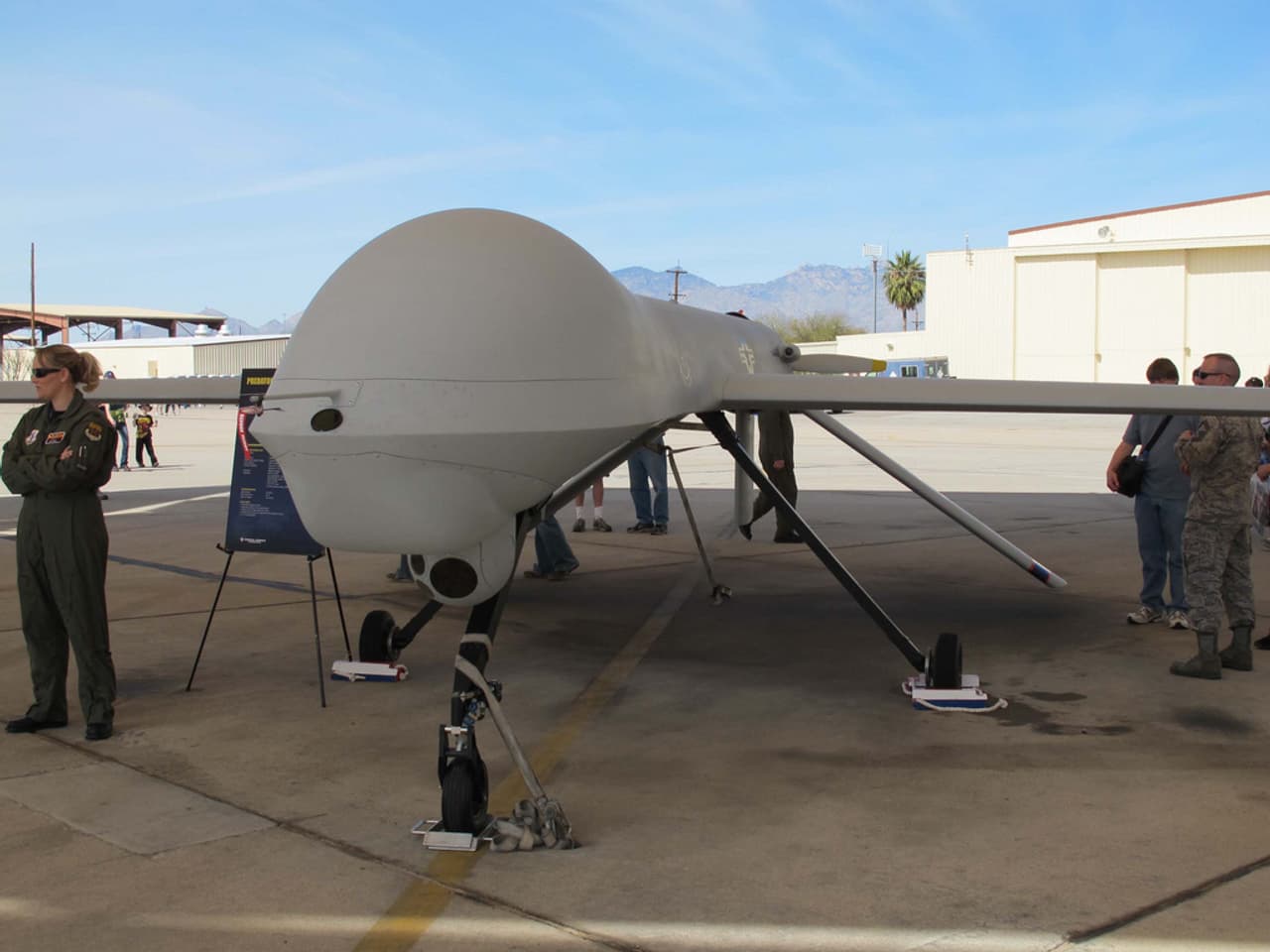
Glossary of drone warfare
AUMF: One week after the September 11 2001 terrorist attacks, Congress passed the Authorisation for Use of Military Force allowing the US president to authorise military action against those responsible and their “associated forces”. This has been used to authorise strikes against terrorist groups in places such as Yemen and Somalia.
Blue on Blue: An incident of “friendly fire”. Friendly fire is when a military force attacks a non-enemy, allied force by mistake. The Bureau recorded three of instances of the US striking Afghan forces in 2016.
CAS: Close air support (CAS) sorties is a specific military term for aerial missions that target enemy forces on the ground near friendly forces. These kinds of attacks can be pre-planned or carried out on an ad hoc basis under what is called dynamic targeting.
CAS with at least one weapons release: The closest analogue to the lay term “air strike”. The US Air Force does not count individual strikes, as there could be multiple missiles fired or bombs dropped on various targets during the same sortie, or mission. This can lead to confusion over terms.
CIVCAS: Civilian casualty
Collateral damage: Military terminology for the incidental killing or wounding of a non-combatant or damage to a non-combatants property during an attack on a military target.
Double-tap strike: A practice where one strike is launched followed by a second strike hitting those that respond. This is controversial as it often kills civilian responders or rescue workers.
EKIA/EWIA: Enemy Killed In Action/Enemy Wounded in Action.
Force protection strike: Rules that allow the US to take out threats to international forces as well as partner groups who are “in extremis”.
Imminent threat: According to the PPG, the US will only use lethal force against a person that “poses a continuing, imminent threat to U.S. persons”. A leaked White Paper argued however that this condition “does not require the United States to have clear evidence that a specific attack on U.S. persons and interests will take place in the immediate future”.
ISR: Intelligence, surveillance and reconnaissance – essential battlefield information gathered by a variety of aircraft. The predator and reaper drones perform this function, with the ability to fly slowly for hours on end over the same area, hoovering up information with their video cameras, infrared cameras, and sophisticated radar systems.
Kill List/Disposition matrix: A database of terror suspects approved for kill or capture. Knowledge of the CIA and military maintaining such a list surfaced in 2010 following the approval of the targeted killing of a US citizen in Yemen.
MQ-1B Predator: A less advanced version of the MQ-9 Reaper.
MQ-9 Reaper: A more advanced version of the MQ-1B Predator. The Reaper drone is both a “hunter-killer” and an intelligence-gathering platform. It can fly for hours on end, orbiting far above the battlefield hoovering up information through its infrared and TV camera, and array of other sensors. It can also take out targets with Hellfire anti-tank missiles or 500lb laser guided bombs.
Non-combatant: A civilian not taking part in active hostilities.
Objective: An individual, group or object identified as a military target.
Personality strike: A drone strike targeting a particular individual based on their identity.
Precision strike: A term often used by the US military to describe US attacks. It is thought to refer to a drone strike.
Presidential Policy Guidance (PPG): Signed in 2013, the PPG is a formal policy governing kill or capture missions outside declared battlefields, including drone strikes.
Protector: A reaper drone certified to fly in European Union airspace.
Strategic effects strike: The term used by the US military for strikes against the Taliban in Afghanistan under new rules passed in June 2016 giving US commanders greater leeway to target the group.
Signature strike: A drone strike where the identity of the person/persons targeted is not known but their “pattern of life” or behaviour indicates they are involved in terrorist activity.
Targeted killing: The United Nations has described targeted killing as the following: “Targeted killing is the intentional, premeditated and deliberate use of lethal force, by States or their agents acting under colour of law, or by an organized armed group in armed conflict, against a specific individual who is not in the physical custody of the perpetrator.”
RPAS: Remotely Piloted Aircraft System.
UAV: Unmanned aerial vehicle or drone.
Watchkeeper – A UK made drone. The Watchkeeper is unarmed and radio controlled. It was designed from scratch for the British Army with the aim of providing aerial surveillance to the troops in Afghanistan but the fleet was first used just weeks before troop withdrawal in 2014.


